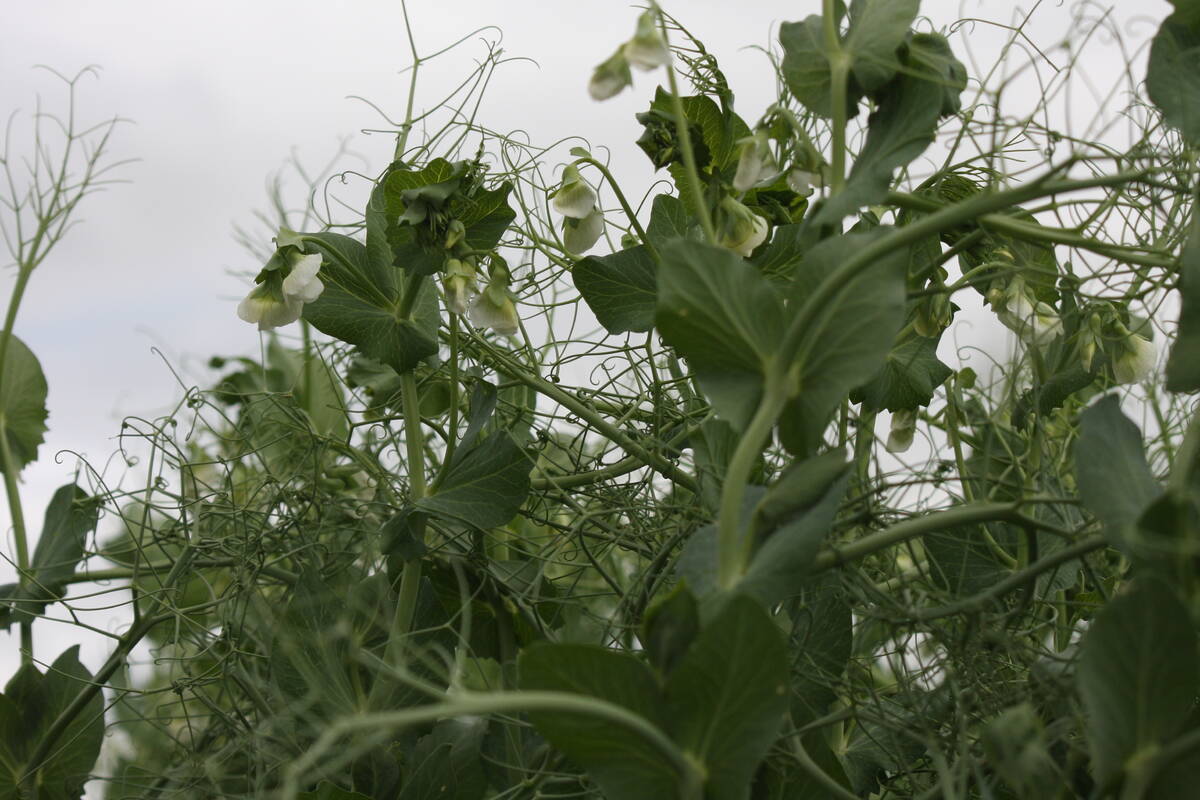Brazil’s soybeans hit the market soon, and meal from that crop will challenge Canadian pea proteins for price in China
CALGARY — Yellow peas had become a darling of western Canadian agriculture, offering a better option than lentils as many producers’ pulse rotations.
Despite lower prices of late, they might continue to do so.
Summer, or kharif, season production in India’s pigeon peas saw some drought issues, and now drier soil moisture in their winter seeding program for pulses overall could be good for producers.
But MarketsFarm weather and markets specialist Bruce Burnett suggested that despite the drier-than-average conditions now, farmers in Canada shouldn’t count on dramatically lower yields for their Indian counterparts.
Read Also

High pea yields shock farmers
There is going to be a massive pea carryout at the end of this crop year.
“It’s early still,” he said at the recent Glacier FarmMedia Farm Forum in Calgary.
Indian chana, desi chickpea, futures prices on the NCDEX, along with open-interest and volume, have been rising rapidly as a result of a reduced harvest and potentially dry seeding conditions. The middle of October saw National Commodity and Derivatives Exchange January futures just above 4,000 rupees per 100 kilograms, about 33 cents per pound, while it now hovers around 4,765, north of 40 cents.
And that does create some support for Canadian peas, despite other challenges for export to India, said analyst Mike Jubinville.
“Our yellow peas can replace chana in that market,” said the MarketsFarm ProFarmer Canada analyst.
But unfortunately for Canadian farmers and exporters, “there is an import tonnage (pea) quota for India that has a 100,000 tonne limit for the year. As long as that is there, it is more onerous than the 50 percent tariff (on pea imports),” he said.
“The $12 to $15 (per bushel) peas we had for a while there was a result of Indian crop issues.”
High prices domestically became an issue for Indian consumers. Now they have an improved domestic supply, at a price consumers can live with and encouragement from the government for farmers to produce bigger crops. That, coupled with timely rains in the past two seasons, has dealt with a pair of issues that are highly political in that country.
“There are 250 million farmers voting in India. India has an election coming in March, so I don’t see any major changes until after that,” he said.
“We will see some potential for later season imports in the rabi (winter) season,” he said.
But while the Indian market for peas has dwindled, China has become a more reliable customer for its feed market.
“I am getting a little more encouraged about this, $7 (per bu.) seems to be a thing now. But $7 to $8 is all the potential it might have,” he said.
While China is out of the United States market and it has vacuumed South American dry of soybeans, Brazil’s winter crop will start coming in within the month. Meal from that will challenge Canadian pea proteins for price in China.
Jubinville said he is 65 percent sold in peas right now and “prepared to play the weather card in India” but isn’t banking on it.














